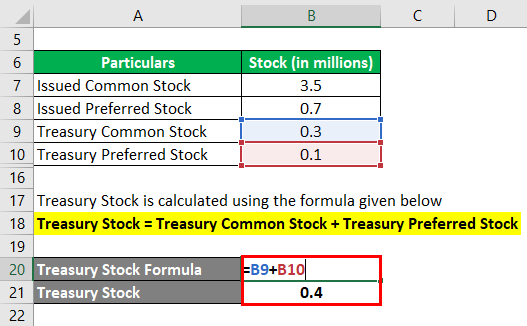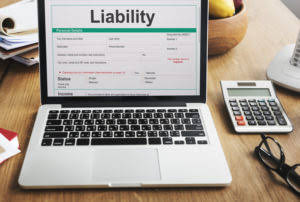
In simple words, stockholders are the partial owner of the company and get dividends and voting rights from the company based on their percentage of stocks they have purchased. Here we will guide you regarding common stock and provide you the tips on how to calculate common stock, but before that, we should know some basic information about stocks. Dividends are typically listed under the ‘cash flows from financing activities’ section of the cash flow statement. This section details how much cash has been used to repay debt, issue shares, or distribute dividends. A high yield can sometimes result from a declining stock price, which could signal underlying financial issues. In contrast, a lower yield from a stable or growing company might indicate a safer, more sustainable dividend.
- Throughout this captivating journey, we will unravel the steps involved in calculating common stock, uncovering the significance of stock issuances, par value, and additional paid-in capital.
- High-quality companies often have intangible assets, e.g., patents, regulations, and brand recognition, with considerable value.
- Preferred stock gets its name because it has higher priority than common stock for dividend payments and liquidation payments (sales of company assets in the event of bankruptcy).
- It enables entrepreneurs and companies to raise capital from investors to expand their operations.
Accounting For Stockholders’ Equity

That 1.6% might seem small in the grand scheme of things, but it equates to nearly $100 billion in lost revenue. Some businesses might forgo replacing missing products, but they’re still losing money at the end of the day. With that said, inventory forecasts are becoming more and more precise, which means even a few missing units may result in missed sales opportunities. That means the inventory book value is $1000, and the actual value is $900. When we say actual value, we mean the actual realized gain you received from selling the items. You can calculate inventory as a value, a unit figure, or a percentage.
Treasury Stock Calculation Example
This calculation shows the percentage return on investment solely from dividends, excluding any stock price appreciation or depreciation. First, determine the preferred stock’s annual dividend payment by multiplying the dividend rate by its par value. Both of these can be found in the company’s preferred stock prospectus, and par value is usually $25 or $50 per share, although there are exceptions. This can occur when a company decides to suspend dividend payments during tough financial times, as we saw with several companies during the 2008 financial crisis. As an example, let’s calculate the P/E ratio for Walmart (WMT 0.77%). Walmart had diluted earnings per share TTM, or trailing 12 months, of $2.33.
Balance sheet representation of common stock
Let us take an arbitrary example of company A to find out how to calculate the number of outstanding shares of the company. We will also try to understand what authorized shares, issued shares, and treasury stocks mean. For example, suppose the number of authorized shares for a company is 5000 shares. The calculation of common stock is also important for determining the voting rights of shareholders. Each share of common stock represents one vote in corporate elections, such as the election of directors. The number of shares outstanding and the total amount of common stock provide important information about the voting rights of shareholders.
Top 20 Best-Performing Stocks: November 2024
Unlike common stock, preferred stock is not accompanied by voting rights and fixed dividends. Companies can only issue a certain number of shares, but they can issue less than their authorized amount. Companies may also buy back outstanding shares, creating treasury stocks. Calculating the number of outstanding shares is useful in corporate strategy to determine if more stocks can (or should be) issued and if the company should buy back any shares. One downside of common stock is that it’s the lowest rung on the payment plan if things go wrong. For example, if a company goes bankrupt, preferred stockholders, creditors, and bondholders must receive their payments first before common stockholders receive any money.
The Mathematical Side of Common Stocks
The PEG ratio accounts for the rate at which a company’s earnings are growing. It is calculated by dividing the company’s P/E ratio by its expected rate of earnings selling or refinancing when there is an irs lien growth. While many investors use a company’s projected rate of growth over the upcoming five years, you can use a projected growth rate for any duration of time.
Learn how changes in market conditions impact common stock values and the strategies to navigate through volatile periods. Get instant access to video lessons taught by experienced investment bankers. Learn financial statement modeling, DCF, M&A, LBO, Comps and Excel shortcuts.
Tracking dividends declared helps investors understand how much income they can expect to receive and provides insight into the company’s financial strategy. A consistent or growing declared dividend figure is usually a good sign of financial stability, while any sharp cuts could indicate financial trouble. This formula tells investors how much dividend income they receive per share of stock they own. It’s beneficial for those who want to track their income from individual investments. To determine how much a company pays each shareholder, you can calculate dividends per share (DPS).
Both common and preferred stockholders can receive dividends from a company. However, preferred stock dividends are specified in advance based on the share’s par or face value and the dividend rate of the stock. Businesses can choose whether or not and how much to pay in dividends to common stockholders.


